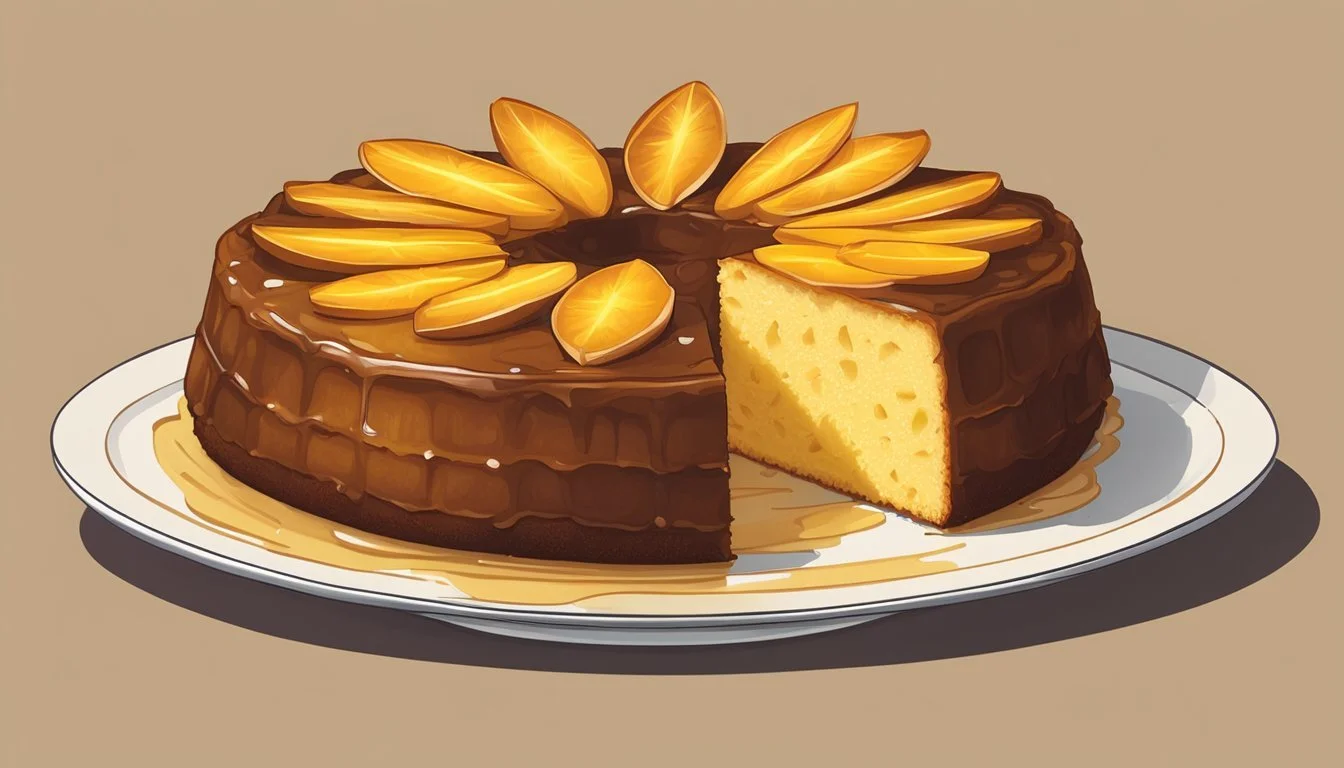How do you eat a pineapple upside-down cake?
Essential Tips for Enjoying This Classic Dessert
Pineapple upside-down cake is a classic dessert that exudes a charming, vintage appeal. It is distinguished by its caramelized topping of pineapple rings and maraschino cherries (how long do cherries last?), which beautifully adorn the bottom of the pan before baking. Once flipped over after baking, the topping becomes a tantalizing, sticky-sweet display, revealing the luscious fruit embedded in a golden-brown caramel glaze atop a moist, buttery cake. This dessert not only delivers on taste but also offers an appealing presentation that is sure to impress.
When one indulges in a slice of pineapple upside-down cake, they experience a delightful combination of flavors and textures. The caramelization of the sugar and butter provides a rich contrast to the tangy, juicy pineapple, ceremoniously enhancing the overall profile of the cake. The cherries add pops of color and a hint of additional sweetness, complementing the tropical fruit. The cake itself balances the fruity caramelized top with its tender, airy crumb and subtle vanilla essence, making it a satisfying and delicious dessert choice.
Eating pineapple upside-down cake can be as enjoyable as admiring it. The dessert is commonly served warm, shortly after it has been inverted, letting the warm topping gently soak into the sponge below. It pairs splendidly with cool whipped cream or a scoop of vanilla ice cream, which can provide a creamy contrast to the warm and richly flavored cake. Whether presented as part of a festive dinner or as a comforting treat, pineapple upside-down cake stands as a testament to the time-honored traditions of home baking.
History and Significance
The pineapple upside-down cake is a classic American dessert with a storied history. The concept of upside-down cakes (how long do cakes last?) is not recent—it dates back to when cakes were cooked in cast iron skillets over a fire. Fruit, sugar, and butter would be placed at the bottom of the pan, with cake batter poured over, ensuring a caramelized fruit topping once inverted.
The modern recipe for pineapple upside-down cake emerged in the early 20th century, aligning with canned pineapple's availability. The Hawaiian Pineapple Company, now known as Dole, played a pivotal role in popularizing the dessert. By 1925, the company was flooded with recipes featuring their product, which included the innovative pineapple upside-down cake.
The cake is a symbol of technological and cultural advancement, celebrating convenience through canned goods and the advent of ovens, which made such baking feats accessible. Today, making a pineapple upside-down cake involves:
Caramelizing butter and brown sugar in the bottom of a pan,
Arranging pineapple slices and cherries atop this sticky mixture,
Pouring the batter over the fruit,
Baking, and finally
Inverting the cake to reveal the pineapple topping.
Its bright flavors and striking presentation have cemented the pineapple upside-down cake's status as a beloved treat. They persist as a testament to culinary innovation born from early 1900s America.
Essential Ingredients
Creating a delicious pineapple upside-down cake relies on a variety of essential ingredients, partitioned into a well-organized list below for ease of reference. Each category serves a distinct purpose in achieving the signature taste, texture, and visual appeal of this classic dessert.
Fruits
Pineapple slices: Integral to the cake's design, these can be fresh or from a can. Canned pineapple rings are commonly used for a consistent shape.
Maraschino cherries: These sweet cherries are placed in the center of pineapple rings, adding color and flavor contrasts.
Cake Basics
Flour: All-purpose flour serves as the cake's structure.
Sugar: Granulated sugar is used within the batter, while brown sugar is commonly utilized for the topping.
Eggs: Large eggs bind the ingredients together and add richness.
Leavening agents: Baking powder is often the choice for giving the cake volume.
Fat: Unsalted butter is preferred for its flavor; however, some recipes may use salted butter or vegetable oil.
Liquid: Milk is used to moisten the batter. Some recipes use pineapple juice for added flavor.
Additional Elements
Vanilla extract: Enhances overall flavor profile.
Sour cream or Greek yogurt: Can be included for a moister cake texture.
Salt: Balances the sweetness.
Toppings and Enhancements
Brown sugar topping: A mixture of brown sugar and butter creates a caramelized top when baked.
Caramelized pineapple topping: Sometimes cinnamon is added for extra flavor.
Alternative Ingredients and Substitutions
Cake flour: Can be substituted for all-purpose flour for a lighter cake.
Yellow cake mix: Offers a shortcut to the scratch-made batter.
Milk substitutes: Non-dairy alternatives like almond milk can be used.
Tools and Equipment
Round cake pan: Typically 9 inches in diameter.
Stand mixer or hand mixer: Crucial for a well-mixed batter.
Rubber spatula: Assists with spreading the batter and folding in ingredients.
Oven: Preheated to bake the cake, usually at 350°F (adjust for pan type).
Preparation Techniques
Mixing dry and wet ingredients: It’s important to combine them separately before integrating to ensure consistency.
Layering the fruit: Arranging the pineapple and cherries is key for the iconic appearance.
Testing doneness: A toothpick inserted should come out clean when the cake is ready.




